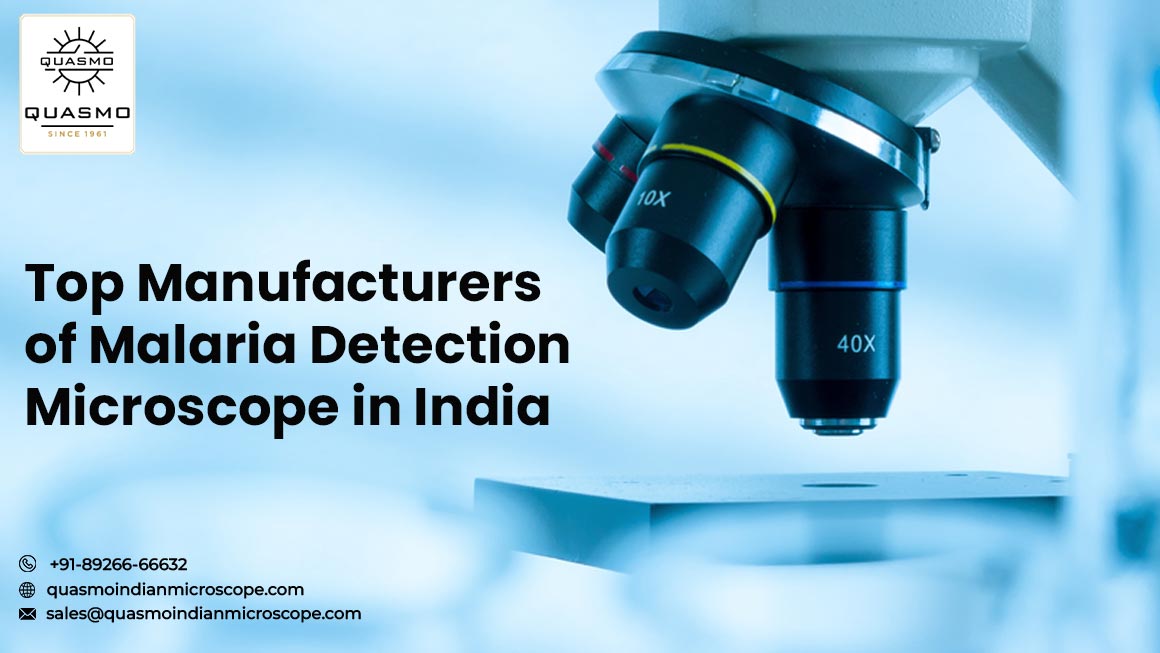
Malaria Detection Microscope in India:- In the realm of healthcare technology, several prominent manufacturers stand out for their contributions to Malaria Detection Microscope in India. These manufacturers specialize in crafting cutting-edge devices that aid in the swift and accurate diagnosis of malaria. Their commitment to innovation and precision has significantly bolstered healthcare efforts across the nation, empowering healthcare practitioners with advanced tools to combat the prevalence of malaria and enhance patient care.
Advantages of Malaria Detection Microscope Manufacturers in India
• Advanced Technology: Manufacturers employ cutting-edge technology for high-precision detection of malaria parasites in blood samples.
• Enhanced Accuracy: These microscopes ensure accurate and reliable diagnosis, aiding prompt treatment.
• Improved Healthcare Access: By producing these devices, they enable healthcare facilities, even in remote areas, to efficiently diagnose and manage malaria cases.
• Empowering Healthcare Professionals: The tools provided by these manufacturers empower medical practitioners with reliable and efficient diagnostic capabilities, leading to better patient outcomes.
Insights into Malaria: Exploring Detection Through Microscopic Vision
Malaria remains a pressing health concern in India, affecting millions of lives each year. The disease, primarily transmitted through infected mosquitoes, poses a significant risk to public health, especially in regions with inadequate healthcare infrastructure. Early detection and prompt treatment are pivotal in reducing the impact of this disease.
Enter the malaria detection microscope.
This is where the Malaria Detection Microscope in India comes into play. These innovative tools are designed with cutting-edge technology to accurately identify malaria parasites in blood samples. Unlike conventional microscopes, these specialized devices offer higher precision and efficiency in detecting malaria-causing parasites, enabling healthcare professionals to diagnose the disease swiftly and accurately.
The Function and Applications of Malaria Detection Microscope in India
Malaria Detection Microscopes operate by examining blood samples to spot malaria-causing parasites. These microscopes use powerful lenses and specialized lighting to magnify tiny organisms, making them visible to the human eye. Healthcare workers place a drop of blood on a slide, which is then examined under the microscope. Their main use is to accurately identify and diagnose malaria infections, aiding in prompt treatment and controlling the spread of the disease.
Upgraded Microscope Attachment for Enhanced Healthcare in India
This innovative attachment upgrades standard light microscopes into cost-effective LED or halogen fluorescent microscopes. It brings the benefits of LED fluorescence microscopy to detect various infectious diseases. Attaching seamlessly to existing microscopes, it identifies blood-borne parasites like malaria, TB, and trypanosomes. Additionally, it aids in quantifying parasitic levels, identifying different species, and conducting various tests such as Chlamydia and acid-fast bacilli. This versatile tool, suitable for field and lab use, is crucial in India’s fight against malaria and other diseases, enabling prompt identification and appropriate treatment.
Sum up
Quasmo Microscope stands out as a premier manufacturer of Malaria Detection Microscope in India. Our commitment to innovation and precision has empowered healthcare professionals across the nation. We provide cutting-edge technology that efficiently identifies malaria parasites, aiding prompt treatment. Our microscopes, seamlessly integrated into existing systems, ensure accurate diagnoses of various infectious diseases, playing a pivotal role in combating malaria and supporting healthcare efforts nationwide. Trust us to continue spearheading advancements in malaria detection microscopes, contributing to improved healthcare outcomes across India.

